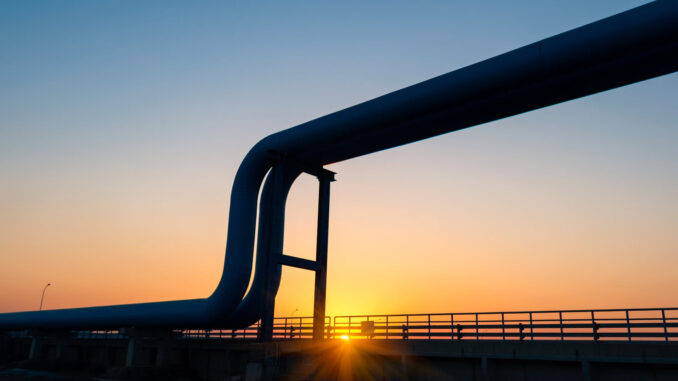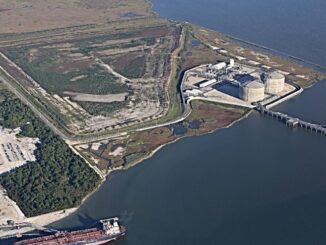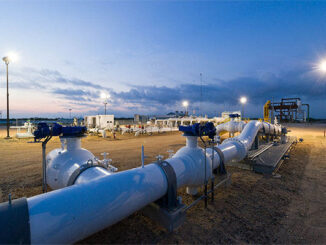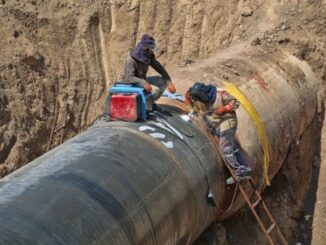
Investors will be watching for signs that the pickup in commercial activity in recent months is sufficient to support new infrastructure growth opportunities.
Many of the companies in the midstream sector have been focusing on projects and initiatives designed to quantify, reduce or capture carbon emissions along the gas value chain, in a nod to the global energy transition toward greater use of clean-burning fuels. The market is looking to see whether developers can make additional revenue from these efforts, or whether public policy changes will be needed to support the projects. Efforts to keep costs down, and drive returns from existing operations are also in focus.
“After last week’s energy equity sell off, investors are broadly questioning whether the earlier rally within energy has run its course and whether there is upside from here,” Goldman Sachs said in a note to clients July 19.
The firm said one of the themes investors are focused on is “what is the best way to position for the ongoing energy transition/focus on ESG [clean technology].”
According to analyst consensus, the 11 major North American pipeline companies analyzed by S&P Global Market Intelligence should mostly record year-over-year increases in adjusted EBITDA and revenues, but will see quarter-over-quarter losses after an unexpected windfall from February’s winter storm benefited several operators during the first quarter.
Kinder Morgan, which kicks off the reporting season on July 21, will likely highlight the sector’s continuing focus on the energy transition after the pipeline giant recently announced plans to buy renewable natural gas developer Kinetrex Energy. Kinder Morgan moves more than a third of the gas consumed in the US.
For CBRE Clarion Securities portfolio manager Hinds Howard, the deal is likely the first of several that midstream companies will ultimately pursue to participate in the energy transition and “reduce terminal value concerns” investors have about oil and gas assets.
“I would expect ongoing announcements like this related to RNG and carbon capture among large midstream companies because of their competitive advantage in those areas versus just trying to jump into wind farms or solar fields without a linkage to their existing footprints,” he said in an interview.
The decision by Equitrans Midstream’s Mountain Valley Pipeline to acquire carbon offsets for 90% of greenhouse gas emissions associated with operating the natural gas pipeline project over a 10-year period, on the other hand, may be less popular among pipeline operators.
“Not all members of the natural gas industry appear inclined to pursue such voluntary action and may not welcome MVP’s move as it could be viewed as potentially setting a higher bar to future project approvals,” ClearView Energy Partners told clients July 13. “We have been expecting project sponsors to begin seriously considering and likely proposing voluntary mitigation.”
M&A activity
Consolidation will also be front and center, particularly after Plains All American Pipeline formed a joint venture with Stonepeak Infrastructure Partners portfolio company Oryx Midstream Holdings.
The venture, which will be known as Plains Oryx Permian Basin, will include all of Oryx’s Permian assets and a majority of Plains’ assets within the basin, excluding the partnership’s long-haul pipeline systems and selected intra-basin terminal assets. The pipeline partnership will serve as the operator and own 65% of the joint venture, while Oryx will hold the remaining 35%. The companies said they have agreed to a 10-year tiered, modified distribution sharing arrangement.
“While not a blockbuster or transformative transaction, we believe the JV formation fits with midstream investor desires,” Mizuho Securities USA told clients July 13. “The cashless deal affords PAA access to increased scale and cost optimization opportunities in a balance sheet neutral manner.”
LNG contracting
As for LNG, long-term contracting efforts are in focus.
Cheniere Energy, a s the largest US LNG exporter and the owner/developer of nine liquefaction trains, appears to be “well-positioned to benefit from both gas price volatility and the cash flows from its long-term contracts on 80%+ of its capacity,” Goldman Sachs said in its note.
It added, “We believe catalysts remain ahead – including the potential for significant deleveraging and meaningful capital returns to shareholders in the next 2-3 years.”



